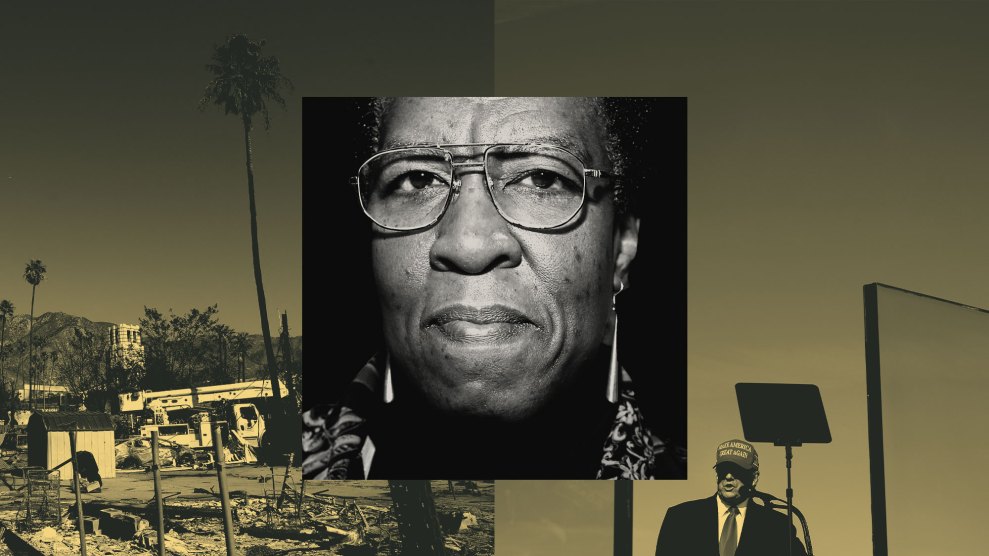Big Tobacco—a $45 billion industry in the United States—is in the political fight of its life. It faces a hostile American president. Justice Department investigations into perjury charges against top executives. Hundreds of liability suits—including several in which the Liggett Group, the country’s fifth-largest tobacco company, broke industry ranks and settled. Whistleblowers on national TV declaring that tobacco companies manipulate nicotine levels to addict smokers. And now the Food and Drug Administration proposing to regulate cigarettes as a drug. Worse, by declaring nicotine addictive, the FDA undermines Big Tobacco’s key legal defense: smokers know the dangers and have no one to blame but themselves.
But the biggest threat to Big Tobacco is you. Large numbers of Americans are no longer content to hand the next generation over to Joe Camel.
Big Tobacco never favored an open fight—it has been secretly buying legislators and threatening scientists and journalists for decades—but this new public censure drives the industry deeper underground. There it can leverage the wealth and politcal savvy it has built over a century of rigging the game.
In the following pages, our writers explain how tobacco executives plan to win the game once more. For them, it is a time of legal danger and political opportunity. No industry has a bigger investment or more at stake in the fall elections. Big Tobacco’s covert operatives and cash are hard at work in the state capitals and on the campaign trail. Here is the strategy:
- Win the presidency. As Sheila Kaplan reports, many of Bob Dole’s key political operatives as well as some of his largest contributions come from tobacco lobbies (see The Campaign for the Presidency). In return, Dole will continue his policy of protecting the industry financially and legally. He has pledged that, if elected, he will fire FDA Commissioner David Kessler, tobacco’s number one enemy (see Tobacco Enemy Number One).
- Control the GOP Congress. The tobacco industry played a crucial role in the “Republican revolution.” As Peter H. Stone reports, campaign contributions and a revolving door of operatives— working jointly for tobacco and for key Congress members—have locked the industry and the top Republican leadership in a tight embrace (see The Nicotine Network). For instance, Stone relates how Majority Whip Tom DeLay has put a tobacco operative in charge of his main political organization, ARMPAC.
- Buy influence with governors and state legislators. Big Tobacco has focused attention on state politicians (see Our Good Friend, The Governor). In one example, Mother Jones obtained a particularly revealing memo regarding California Gov. Pete Wilson’s efforts on behalf of Philip Morris. The industry also pressured state officials to overturn tough, local anti-smoking measures by “pre-empting” them with milder statewide measures. The strategy succeeds when tobacco companies manage to hide it but backfires when it becomes public (see The War in the States).
- Create and fund phony grassroots front groups. Since there are no natural grassroots movements to protect tobacco profits, the companies have to invent them. Ted Gup tells how the industry covertly organized its less-than-effective “smokers’ rights movement,” then transformed it into a far more successful “anti-tax” movement (see Fakin’ It).
- Use political allies to silence moral critics, including religious conservatives. William Saletan found that Ralph Reed’s Christian Coalition (see Sin of Omission) is particularly cooperative.
- Manage the media. Big Tobacco’s advertising dollars muffle criticism in the print media, while its lawyers intimidate broadcasters with lawsuits. In one historic case, ABC killed an outstanding TV documentary. Mother Jones, which was leaked a copy of the tape, prints the edited transcript.
- Move abroad, beyond the reach of U.S. regulators. Tobacco’s future depends on increasing sales overseas; protecting the domestic market is an interim maneuver. As former tobacco lobbyist Victor Crawford put it, “Our job was to hold the front until they could flood the Third World.” The industry persuaded Reagan and Dole to strong-arm other countries, especially in Asia, to allow the import of American cigarettes and to accept tobacco ads on TV—advertising prohibited here.
- Target teens. Crawford’s phrase, “Hold the front,” is another way of saying “addict teenagers”: The industry must replace the 1.7 million American smokers each year who quit or die. It does—3,000 new teenagers pick up the habit every day. Robert Dreyfuss tells how the FDA is trying to curb kids’ smoking (see Joe Camel’s Tracks). Michael Castleman describes the health tragedy teen smokers face (see Life in Smoke).
- “Give an inch, gain a decade.” As Richard Kluger’s history shows, the industry often fights regulation ferociously, then compromises to its own advantage. Tobacco companies fought health warnings, then used them to deny legal liability to consumers. When they were losing the fight over TV ads, they proposed their own ban and used it to prevent new brands from taking market share. When cigarette excise taxes passed, the tobacco companies raised prices and profits, while blaming the hike on bureaucratic government.
In the current climate, the industry may agree to some new restrictions on teen marketing—like ineffective anti-smoking education programs—and a few new taxes. Tobacco hopes these taxes will make our government more dependent on cigarette sales and more willing to compromise. We can’t compromise. The challenge to our democracy couldn’t be more clear: Can we control a politically corrupt industry whose products kill our citizens?
















